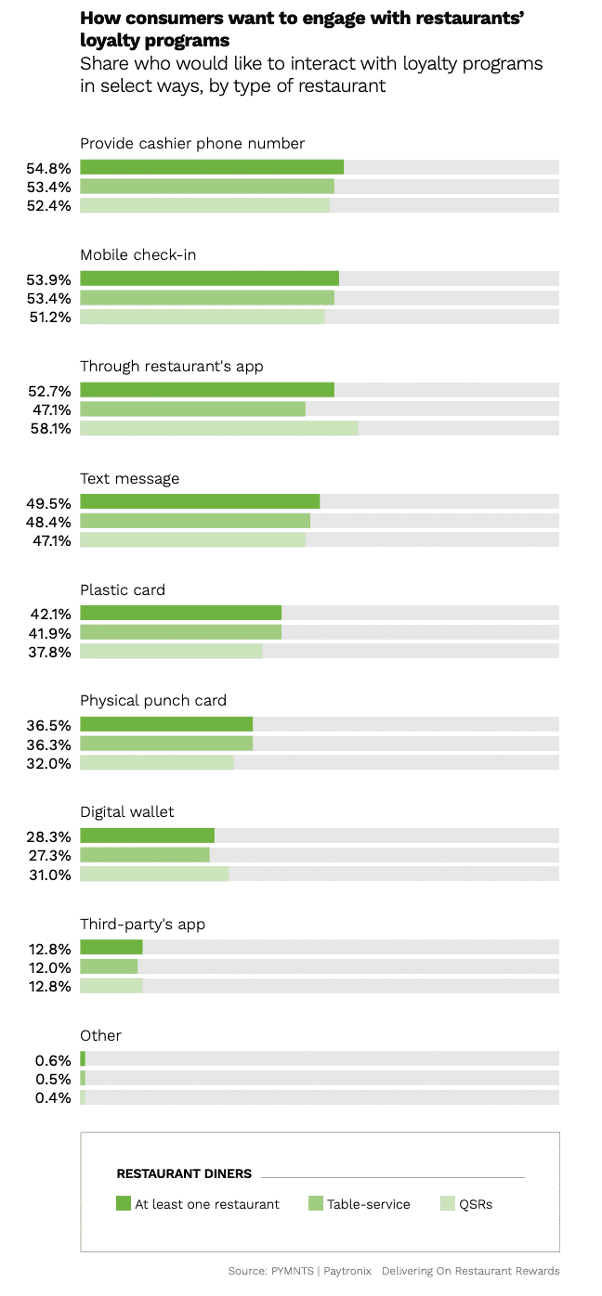Fetch Rewards Expands into Restaurant Loyalty, Aiming to Combat App Fatigue

As restaurant ordering has shifted digital, consumers have been faced with two competing trends pulling them in opposite directions. On one hand, more restaurants have been launching their own loyalty programs and apps, rewarding consumers for repeated digital ordering. On the other, there has been huge demand for third-party restaurant marketplaces, which consolidate the ordering experience, helping consumers circumvent the tangle of restaurants’ disparate platforms.
On Monday (Sept. 20), Fetch Rewards, which offers loyalty rewards for uploaded receipts, announced it is expanding its platform to include restaurant brands. The platform is the top rewards app in America by app store rating in their category and by number of daily active users. Previously, the company has offered shoppers rewards for consumer packaged goods (CPG) and other grocery and retail purchases. Now, Fetch is launching its restaurant rewards category in partnership with three major brands: Burger King, Panera and Papa John’s.
“We’re not a replacement for any of [restaurants’] own loyalty programs,” the company’s CEO and founder Wes Schroll told PYMNTS in an interview. “The fundamental problem that they run into is that only the top 20% of their customers are actively using those programs and engaging with them in any sort of meaningful frequency … What we see is, Fetch actually allows our partners to expand and talk to their entire consumer base, and not just the people who are engaged with those loyalty programs.”
From Fans to Super Fans
Schroll noted that, in tests of these restaurant rewards, consumers who were already loyal to a given restaurant brand made “a couple additional trips” every month when they were able to earn Fetch rewards in addition. He explained that, where previously they would only be encouraged to spend at that restaurant when opening the app or receiving notifications from that restaurant, these partnerships encouraged consumers to purchase from the restaurant when they interacted with the Fetch app as well.
Given that Fetch offers rewards across categories — packaged and fresh foods, household essentials, and health and wellness goods, among others — the partnership expands the commerce occasions on which a given consumer may encounter the restaurant. Additionally, unlike when consumers order from restaurants’ own platforms, Fetch provides rewards from orders through third-party marketplaces as well.
By offering loyalty rewards across ordering channels, restaurants are able to gain a greater share of consumers’ sizable cross-channel annual quick-service restaurant (QSR) spending. Data from the March-April edition of PYMNTS’ Delivering on Restaurant Rewards report, created in collaboration with Paytronix, find that the average single adult spent $1,849 on QSR online orders in 2020, $1,264 on QSR phone orders, and $1,501 on QSR dine-in orders, totaling $4,463 on QSR orders.
It is worth noting that consumers are still hesitant to interact with loyalty rewards through third parties such as Fetch. Data from the August edition of Delivering on Restaurant Rewards find that only 13% of consumers want to interact with loyalty programs through third parties, while in contrast 55% want to interact by providing the cashier their phone number and 54% by mobile check-in.

See also: New Data: Two-Thirds of Consumers Find Restaurant Rewards Impersonal
Go Where the Love Is
Schroll noted that the idea to incorporate restaurant rewards into Fetch’s platform came from what first appeared to a mistake—consumers uploading restaurant receipts to redeem points even before they were offered. He noted that consumers wanted to get reward for all their food spending across the “eat” category, be it prepared foods or raw ingredients.
“We viewed that as our consumers voting for us to go out there and get partners on the restaurant side of the business, because they wanted to get rewarded for their spend whether it was in a grocery store or when they were out to eat,” he said.
The company chose its restaurant partners based on which brands’ receipts consumers were already uploading. Additionally, partnership further targets what consumers have shown that they want by integrating data about past orders. Schroll noted that, unlike card-linked offers, Fetch can view consumers’ line items on their receipts, allowing for more personalized messaging.
“In today’s world, understanding and reacting to individual action can be even more telling than demography,” Lee Barnes, head of data insights at Paytronix, explained in the March 2021 edition of our Order to Eat tracker, a PYMNTS and Paytronix collaboration. “The goal of today’s loyalty programs is not just to deliver rewards but to deliver relevant rewards that will motivate individual guests.”
Bigger Fish to Fry
Schroll hopes to grow the platform’s restaurant offerings, becoming a one-stop shop for restaurant rewards for consumers frustrated with the process of individually enrolling in each brand’s loyalty program. A Bond study from 2019 found that the average consumer is a member of 14.8 loyalty programs, but they active in less than half — 6.7 — of these programs, suggesting a degree of loyalty fatigue.
The platform currently has 10.8 million users, up from 7 million when PYMNTS spoke to Schroll in the spring. Within the next two to three years, Schroll aims to grow that number three- or fourfold.
Read more: Fetch Flips The Script On Customer Loyalty
“I think the early movers, the restaurants that we partner with quick, they’ll get those learnings faster, and they’ll become more adept to using this as a channel and winning their own fair share, versus those who come on later,” said Schroll. “There won’t be as many consumers for them to go after and really win with, because they’ve already been won over by X, Y or Z brands.”